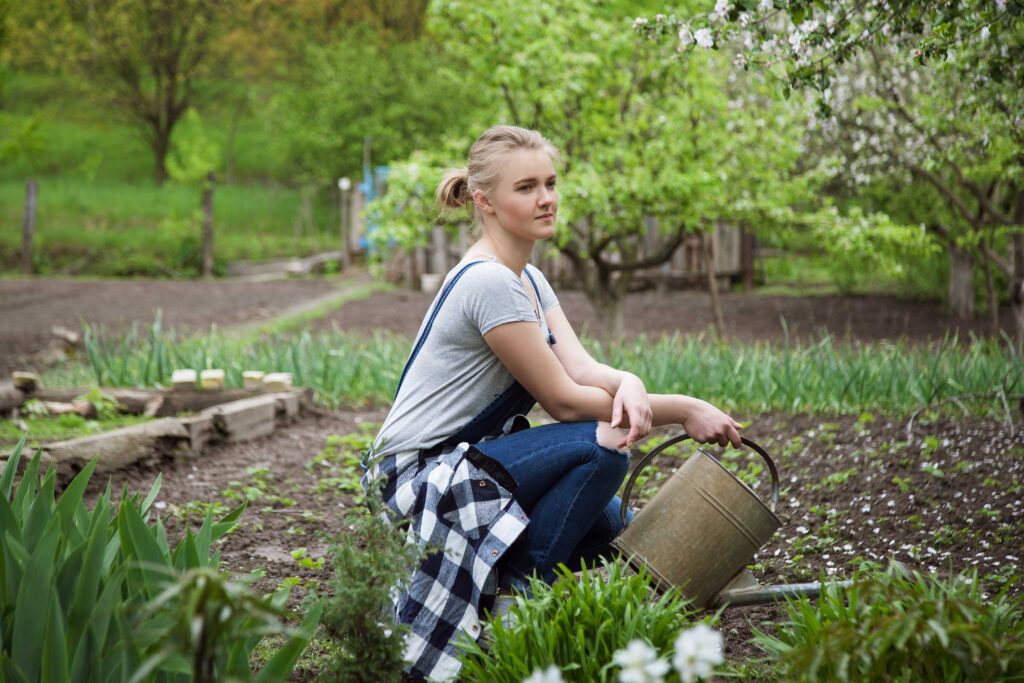Become a water warrior this Spring

Agri-SA’s multi-model rainfall forecast for early summer (Nov-Dec-Jan) indicates below-normal rainfall over the central parts of the country and above-normal rainfall for the north-east. But no matter where you live, we all know that water is a scarce resource that needs to be conserved. Here are some top tips to being a responsible water user in your vegetable garden, all through the year!
Time your watering
Proper watering is crucial for maintaining a thriving vegetable garden and knowing when to water is essential to ensure that plants receive adequate moisture without risking overwatering or underwatering.
It is generally best to water vegetable gardens in the early morning, as this allows plants to absorb water before the heat of the day sets in. However, it is important to monitor the soil moisture regularly and adjust watering frequency based on the specific needs of your plants – in the heat of summer you will probably have to water in the evening too, to help your plants recover.
Watering at the right time:
Minimises evaporation.
Gives plants ample time to dry off before nightfall.
Reduces the risk of fungal diseases.
Ensures that water reaches the plants’ roots.
Mulching
Mulching is a gardening technique that involves spreading a layer of organic or inorganic material on the soil’s surface – there should be no bare soil visible at all. In the veggie garden we recommend always using an organic mulch, such as straw, grass clippings, compost, wood chips or leaves, as it helps to improve the soil and doesn’t add anything harmful to the soil (and therefore to your food).
This protective covering serves multiple purposes, including:
Regulating soil temperature.
Adding organic matter to the garden.
Suppressing weed growth.
Conserving moisture.
Create hydrozones
Grouping plants according to their water use, known as hydrozoning, is a smart and efficient approach in gardening that can help conserve water and it is particularly effective in the edible garden. By strategically arranging your herbs or veggies with similar water requirements (high, moderate, low and very low water usage) together, gardeners can ensure that each group receives the appropriate amount of water without wasting resources.
Optimise water usage.
Promote healthy plant growth.
Minimise water stress on plants.
Polymer crystals
Polymer crystals, also known as water-absorbing crystals or hydrogels, have revolutionised the world of gardening. These tiny granules have the remarkable ability to absorb and retain large amounts of water, which makes them a valuable tool for water conservation.
Reduce watering frequency.
Promote healthier, more resilient plants.
Successfully grow water-needy crops in hot South Africa, increasing your harvest and improving the flavour of your produce.
Water warrior herbs
Rosemary – plant and forget. Rosemary comes from the dry Mediterranean area and can be grown in containers or the garden.
Thyme – an aromatic herb with a subtle, earthy flavour, thyme is commonly used in Mediterranean and French cuisine. It doesn’t need much looking after, either.
Rocket – this is one salad green that doesn’t need much water at all. It can be treated as a veggie or a herb, or left to flower for the bees.
Water warrior veggies
Swiss chard ‘Bright Lights’ – this nutritious leafy green vegetable is known for its vibrant stems, but it is also tough and doesn’t need much attention.
Beans – there are thousands of varieties, from the common green bean and broad bean to those grown for dried beans. Being legumes, they also add nitrogen to the soil.
Brinjals – few veggies are as wonderful as the beautiful, glossy brinjal. It’s water-savvy too, and should be grown on a ridge to prevent overwatering.
For more information visit www.lifeisagarden.co.za


No Comments